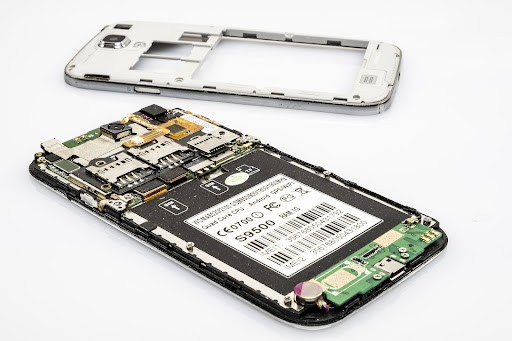You should have the right to repair your devices in Canada
The Right to Repair movement wants to give you independence over your own devices, including when, how and with whom you make repairs.
When you buy a smartphone or a laptop, that device should be completely yours; you ought to be able to do what you want with it. If you drop your phone off the fifth floor, and the screen breaks, you should be able to choose to repair it. However, many manufacturers are making it increasingly difficult for users to make repairs.
The Right to Repair movement fights for a guarantee of the right of users to maintain and repair the electronic equipment they buy. Right now, Original Equipment Manufacturers (OEMs) hold all the cards, and use their control of their devices to make it much more difficult for us to exercise our right to repair our devices at a fair cost. The Right to Repair movement seeks to ensure that OEMs provide tools, software and instruction manuals to their consumers in order for them to perform their own diagnostics and repairs. The Right to Repair movement also advocates for OEMs to provide access to replacement parts for both the general public and small businesses that offer independent repair services.
Creating new legislation and amending existing ones will stop the OEMs’ monopoly behaviour, and allow users to choose the supplier they want to make repairs to their equipment
Easier to buy a new one than to repair the old one.
It is increasingly common for OEMs to design their products so that only they have the tools and parts necessary to do maintenance and repairs. OEMs create special glues to make opening equipment difficult; they create uniquely shaped fasteners that won't fit regular screwdrivers; and most of all, they deny access to spare parts, instructions manuals or software necessary to perform diagnostics, maintenance and repair. This makes it expensive, time-consuming and difficult for users to repair their own devices or take them to independent repair shops. Ultimately, consumers have no choice but to agree to the high prices and long wait times of the OEM. Many find it easier and cheaper to buy new equipment than to go through the painful process of receiving technical support from OEMs. That’s wasteful for users and bad for the environment, and good only for OEM profits.
Right to repair is not just about phones.
The Right to Repair movement is not limited to cellphones and laptops. Lack of access to repair alternatives affects automobiles, agricultural, medical and military equipment. As machines become more sophisticated, they increasingly rely on electronic programs to operate, requiring specialized parts, knowledge and software for repair.
Farmers in the United States have been complaining that it is increasingly difficult to repair their tractors because companies like John Deere will not provide users with the software necessary to make repairs. Most of the time, direct repairs with the OEM can take longer than the time available to harvest the crops. Some desperate farmers are even resorting to hackers to break into the systems of their own tractors.

Likewise, during the COVID-19 pandemic, several hospitals have complained of delays in repairing essential ventilator equipment because only the original manufacturer can make needed repairs, and there are few technicians available. In this case, the restrictions for maintenance and repair of a ventilator can be the difference between life and death.
Why is the Right to Repair important?
Here are some of the reasons why Right to Repair should be a priority:
- Costs: When a company owns the parts, instructions, and tools necessary to make repairs and refuses to share that information with others, they’re creating a miniature monopoly over users of their own devices. This allows OEMs to charge extraordinary amounts for repairs: Have you ever wondered why it costs $300-$400 to fix a broken iPhone screen at the Apple store? Without market competition, users do not have options for where to get their equipment repaired. They must agree to OEM prices or, as in many cases, decide to buy a new device because it is cheaper than repairing the old one. This burden is painful for everyone, and is proportionately heavier on marginalized communities and low-income families.
- Time: The restrictions that companies impose on repairs make the process time-consuming for users. Even when users agree to pay OEM prices, these repairs can take long periods because parts are out-of-stock or technicians are unavailable. Think of the farmers and medical professionals who rely on repair services. Access to a variety of repair options is crucial to their professions.
- Environment: Buying new equipment instead of repairing old devices greatly increases technological waste (e-waste). Companies are designing electronics equipment to have a shorter lifespan, programmed obsolescence, to encourage users to buy new products more often. The result is more electronics thrown away each year, most of which end up being shipped to lower-income countries. At the same time, more equipment production requires extraction of minerals from the earth, lead soldering, energy-based production processes and plastic packaging, all of which causes an ecological toll on our already precarious environment.
But why don't OEMs want to facilitate repairs?
There are two main reasons why companies claim they can’t provide tools, parts, instruction manuals and software to users and third-parties:
- OEMs argue that the repair movements force them to give away intellectual property without acknowledging the number of resources and effort invested in technological innovations.
- Providing instruction manuals and software would allow people to circumvent safety and environmental protocols.
Nevertheless, a recent report of the U.S. Federal Trade Commission (FTC) found that "There is scant evidence to support manufacturers' justifications for repair restrictions." In fact, many companies create these restrictions because it is more expensive for them to have repair workshops than to have users buy a new device. If there are no repair options except for the OEM, consumers have no choice but to abide by their rules and pay their costs, no matter what those are.
Legislation baby steps: Canada
Sustained pressure from a public fed up with inflated repair costs is driving more legislative attention to the right to repair. As of October 2021, however, no bills entrenching the right to repair have become law in Canada. The timeline below covers recent proposals for the right to repair over the last few years.
| Date | |||||
|
|
||||
|
|
||||
|
|
||||
|
|
||||
|
|
||||
|
|
Take action, support Right to Repair.
You can support the Right to Repair movement and help it become a federal law. Sign the petition NOW!
Other actions you can take:
- Visit the iFixit website, where you can find repair manuals, share your repair skills, or get recommendations for repair-friendly devices.
- Look for repair cafes in your city. These are spaces designed to help you fix your stuff, from phones and laptops to household appliances and clothing. See the example of Metro Vancouver and repaircafe.org.
Buy repair-friendly devices. iFixit has a list that rates popular devices according to how accessible they are for repairs and maintenance. See the list here.
Image sources:
- Phone image by Bruno /Germany from Pixabay
- Tractor image by Image by Franz W. from Pixabay


 Take action now!
Take action now!
 Sign up to be in the loop
Sign up to be in the loop
 Donate to support our work
Donate to support our work